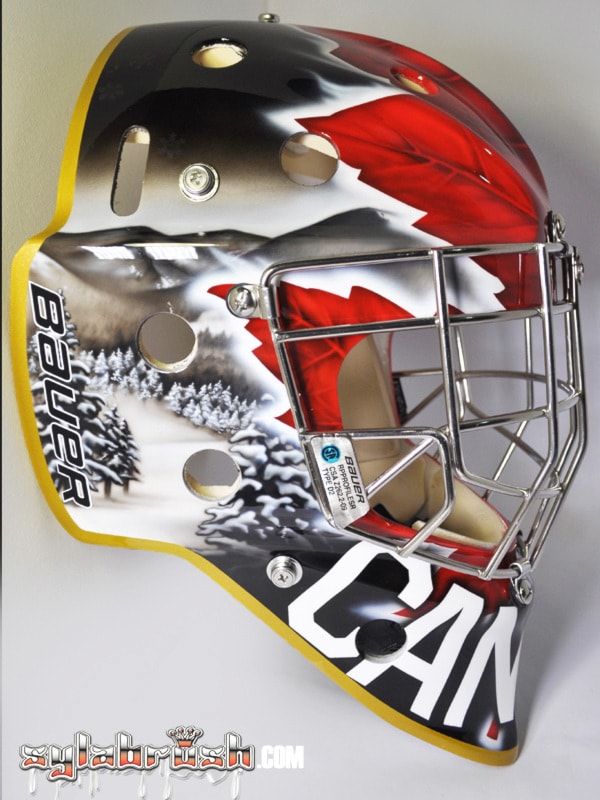Canada’s women’s hockey team’s road to the Sochi Winter Olympics began at Penticton, and a little piece of their training grounds was with them when they took gold.
“Apex mountain,” explained Charline Labonté of a design painted on the side of her goaltender helmet of scenery from the hill. “We had our bootcamp there and it was not to say hell, but close to hell. Our last challenge was to climb that mountain on our bikes. When I look at it now, we survived and I know we can do anything we want.”
It was Labonté’s fourth Olympics and she said the preparation they had in Penticton May 27 to June 19 at the Okanagan Hockey Academy was key.
“Every time I say there is no way they can make bootcamp harder, but they always find a way. It was a little different but it was just as hard even harder than the others. We are getting better and fitter and that is what we needed at the Olympics,” she said.
Labonté opened the Olympic tournament for Canada with a 5-0 shutout against eventual bronze medal winners Switzerland. The goaltender also helped Canada defeat their U.S. rival in the preliminary round 3-2.
Shannon Szabados also earned a shutout against Finland in the preliminary round and a 3-1 win over Switzerland in the semi-finals.
Just as in the Vancouver 2010 Olympic Winter Games, Szabados was named starter for the gold medal game against the U.S. Canada dug themselves out of a 2-0 deficit and defeated the U.S. in a thrilling overtime finish, 3-2. Canada’s third goaltender Genevieve Lacasse did not see any game action.
While fighting for the same position, the goalies say there is no animosity.
“We are such a tight group. The three of us had ups and downs throughout the year and we always stick together,” said Labonté.
The goaltending trio also decided to design a symbol to represent that spirit and each had it displayed on the back plate of their helmets: a ribbon-type infinity sign wrapped each of the goalies numbers together.
“It represents the tightness of the group and our numbers all connected. We all bring something so different but connect so well, so it is a cool combination,” said Labonté. “I know if they weren’t there to push me as hard as they do I wouldn’t be at this level and it is the same for them.”
The goaltender had her helmet painted by Sylabrush and based the total design of her mask off Canada’s third black jersey. Labonté also recognized pioneers of women’s hockey on the other side of her mask.
The team’s final steps to Russia were also at Okanagan Hockey Academy training facilities. The 21 players spent 10 days training, practising and competing at Okanagan Hockey Academy Europe in St. Polten, Austria. The school was founded as a subsidiary of the Penticton school, the biggest and oldest hockey academy in the world.
This gave Canada a chance to get acclimated to being overseas, before taking to the Olympics ice which spanned multiple time zones ahead. Andy Oakes, president of Okanagan Hockey Academy, said hosting the national women’s team is simply a natural fit. Canada alumni Gina Kingsbury and Rebecca Russell coach the female prep team in Penticton.
“We’re Canadian fans through and through,” said Oakes. “So, being able to assist one of the national teams on their quest for a gold medal is important for us and we’re happy to be able to help with their journey. We believe in them.”
Melody Davidson, Hockey Canada’s general manager said training both on and off the ice at Okanagan Hockey Academy was pivotal in their success.
“We are excited to be able to start and finish the road to Sochi at Okanagan Hockey Academy, which has made us feel comfortable throughout our Olympic journey,” said Davidson.
